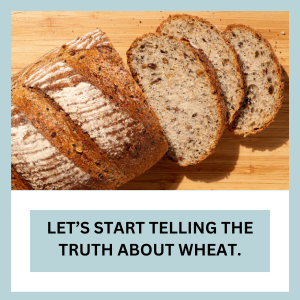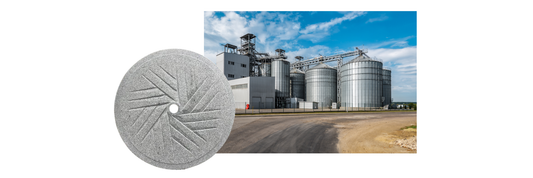Stone-Milling vs. Modern-Milling
What’s the Difference and Why Does it Matter?
The process that a kernel of wheat goes through to become flour makes all the difference when it comes to quality. Like a lot of modern practices, the desire for speed and efficiency has created processes that produce quantity, but not quality. Modern-milling practices take out the good stuff leaving us without the fiber, vitamins, and minerals found naturally in wheat. Let’s learn more about both milling processes.
Stone-Milling
Stone-milling is a traditional method that uses large, flat stones to slowly grind whole wheat kernels. Because it operates at a lower speed and temperature, this process helps preserve more of the grain’s natural oils, nutrients, and flavor. Typically, stone-milled flour contains all parts of the wheat kernel—the bran, germ, and endosperm—making it more nutritious and flavorful. Vitamin E, the B vitamins, magnesium, zinc, iron, healthy fats, antioxidants, and fiber can all be found in stone-ground wheat. However, the presence of natural oils from the germ means that stone-milled flour has a shorter shelf life.
Modern-Milling
Modern steel-rolled milling is an industrial process that uses high-speed steel rollers to crush and separate the components of the wheat kernel. This method is used to produce white flour by removing the bran and germ, which extends shelf life but also strips away much of the fiber and nutritional value. It’s much faster than traditional milling and generates more heat, which can degrade the grain’s natural nutrients. Steel-rolled milling results in a very consistent, fine flour ideal for mass production and consistent commercial baking, but it's less flavorful and less nutritious. Even most of the whole wheat flour sold in grocery stores is milled using this method,. They just add back in some of the bran and germ after processing.
What Does It Mean for You?
Modern milling gives us a shelf-stable product and does allow us to bake some fantastic foods that require a fine and consistent texture. However, stone-milled flour gives you something fresh, something whole, and something real. It’s nourishing, filling, and flavorful. And while it may be a little harder to work with compared to the modern steel-milled flour in the store, the results are well worth it.
If you're ready to try baking with fresh, stone-milled four, I recommend you start with our Sifted Heritage Turkey Red Wheat Flour. This flour is stone ground, but it has 15% of the bran, germ, and endosperm removed to reflect a typical bread flour. It's easier to bake with for beginners!.
Ready to go all in? Try out our basic bread recipe using our Heritage Turkey Red Wheat. It's simply delicious. It's the recipe my kids and their friends love! Shape this recipe into dinner rolls and enjoy!



